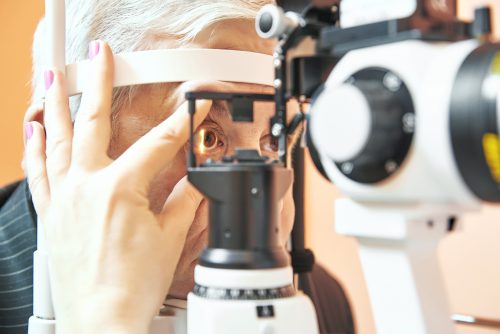
A recent report published in JAMA Ophthalmology concluded that screening adult patients for diabetic retinopathy in primary care settings may help reach a significant portion of the population with diabetes.
“Prior studies found that screening for diabetic retinopathy (DR) in primary care settings using telemedicine increased screening rates among individuals with diabetes,” the researchers wrote in their abstract. “This finding has led to interest in expanding the use of primary care–based screening for DR.”
The goal of the study, therefore, was to identify how many adults with diabetes and high-risk adults have regular contact with their primary care physicians. Patients considered high risk for missing recommended eye exams were those with lower income, lower education levels, or type 2 diabetes; who were African American, Hispanic, uninsured, or not taking diabetes medication; or who did not have diabetic retinopathy. Researchers used the 2016 National Health Interview Survey to collect data on adults aged 18 years or older in the United States with self-reported diabetes.
A total of 3,229 patients (mean age, 60.1 years; 50.1% female) were included in the study, of which 15.3% (95% CI, 13.8%-17.0%) had lower income, 19.7% (95% CI, 17.8%-21.6%) had lower educational levels, 15.4% (95% CI, 13.5%-17.4%) were African American, 16.0% (95% CI, 13.7%-18.6%) were Hispanic, and 6.1% (95% CI, 4.9%-7.5%) were uninsured. In the total cohort, 87.7% (95% CI, 85.9%-89.3%) reported visiting a primary care physician within the last year. Even among patients who had not received a dilated eye exam within the last year, 82.2% (95% CI, 78.4%-85.4%) had seen a primary care physician. Over 78% of each high-risk subgroup (except uninsured patients) had seen a primary care physician within the last year.
“Screening for DR in primary care settings has the potential to provide timely screening to a large portion of US adults with diabetes because most US adults with diabetes, including those at high-risk of missing recommended eye examinations, have regular contact with primary care physicians,” the researchers observed.
Study Finds ‘Promise and Challenges’ When Using AI to Diagnose Diabetic Retinopathy







 © 2025 Mashup Media, LLC, a Formedics Property. All Rights Reserved.
© 2025 Mashup Media, LLC, a Formedics Property. All Rights Reserved.